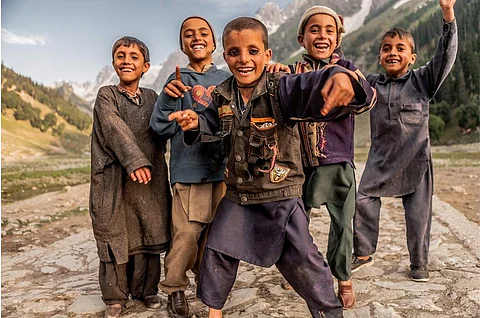

I work in a college in the remote area of Rajouri, where many students come from tribal backgrounds with limited exposure to public speaking or formal academic environments.
Despite these challenges, I've observed something remarkable. Some of these students, especially the girls, are incredibly bright. They write strong, well-argued answers in their examinations, demonstrating clear intellectual ability. Yet when it is time to present their assignment topics in front of the class, even those who excel in writing cannot speak a single word.
Initially, I thought allowing students to choose topics of their own interest would make presentations easier. But the fear of public speaking and lack of confidence still held them back. It became clear that intellectual potential wasn't the issue. Rather, it was the psychological and emotional barrier to speaking in front of peers that needed addressing.
This realisation led me to completely change how I conducted presentations. Instead of beginning with formal academic topics, I started making them comfortable with simple, friendly conversations. I asked about their names, their villages, favourite foods, what changes they wished to see in their communities, how they managed anger, their thoughts about girls' roles in society, and their personal preferences like thoughts on marriage.
This small shift made a profound difference. I could see them begin to open up, think freely, and express themselves. This approach, grounded in personal connection and emotional safety, helps students gain the confidence they need for future academic presentations and for life beyond college.
Growth Model Strategy
What I've developed can be called the Growth Model Strategy—a student-centered, emotionally intelligent teaching method that builds trust, expression, and confidence through personalised engagement. This strategy emerges from three key understandings - learning is holistic and works best when cognitive, emotional, and social factors are all addressed; confidence must precede content, especially for students from underserved backgrounds; and connection nurtures communication because when students feel seen and valued, they participate more readily.
Personal questions serve as more than just icebreakers. They act as gentle introductions to public speaking while building bridges between students and teachers. Talking about familiar things like home or personal interests helps reduce fear and anxiety. When a teacher shows genuine interest in a student's background, it makes them feel respected and valued. Answering simple, personal questions becomes the first step toward more formal speaking, while strengthening the teacher-student bond and making the teacher more approachable.
Putting it Into Practice
I use these conversations during warm-up sessions, group introductions, or informal rounds before formal presentations. The goal is creating a communication-friendly classroom environment. I might ask what's special about their village, what they enjoy doing in their free time, or what their favourite food is and why. Sometimes I'll ask what they could teach us from their culture, what changes they want to see in their community, or how they view the role of girls in society.
These questions help build confidence while creating a platform for sharing cultural knowledge and personal wisdom. The implementation follows a gradual progression. I start with comfort zones rather than immediately placing students in formal tasks, then slowly move from personal to academic content. After talking about a student's village, I might transition to asking them to describe a current issue in that village.
I've found that creating peer support systems works well—students practice their answers with a friend before presenting to the whole class. Visual aids and props help too, allowing students to use photos, objects, or drawings to explain their points. After each presentation, I give positive, specific feedback focusing on growth rather than just correctness.
Encouraging storytelling has been particularly effective since it's a natural and culturally rich way to build oral skills.
Real Transformation
The results have been remarkable. One girl from a tribal community who initially couldn't say her name aloud in class now confidently shares her opinions about women's education and healthcare in her village. Another student who was once completely silent now narrates local folk tales with passion and clarity. These transformations aren't just academic—they're deeply personal, social, and emotional victories.
For students, this approach improves self-confidence, enhances speaking skills, increases classroom participation, strengthens identity and cultural pride, and prepares them for competitive and professional challenges.
For teachers, it provides better understanding of student backgrounds, stronger relationships with students, a more dynamic and inclusive classroom environment, and higher student engagement and performance.
Making It Work
While the Growth Model Strategy is informal in nature, it can be embedded into the curriculum without compromising academic standards. I replace some written tasks with oral storytelling or community-based interviews, introduce brief discussion slots where students respond to daily questions, organise cultural exchange days where students showcase elements of their culture, and ask students to write short reflections on their speaking and listening experiences each week.
Implementing this model does come with challenges. Personalised interaction takes time, especially in large classrooms. Not all teachers are trained in emotional pedagogy or culturally responsive teaching, and traditional assessment systems may not reward this kind of growth.
But these challenges are worth facing because the long-term impact of building a confident, expressive, and aware student body far outweighs the temporary difficulties.
In regions where students have been historically silenced by poverty, culture, or systemic neglect, this model offers a pathway to voice, visibility, and validation.
Every child has a story, and every student has a dream. But not everyone is given the opportunity to share it. The Growth Model Strategy gently but firmly hands over that opportunity, helping young voices find their tone, their volume, and their truth. And once they start speaking, the world better listen.
Have you liked the news article?